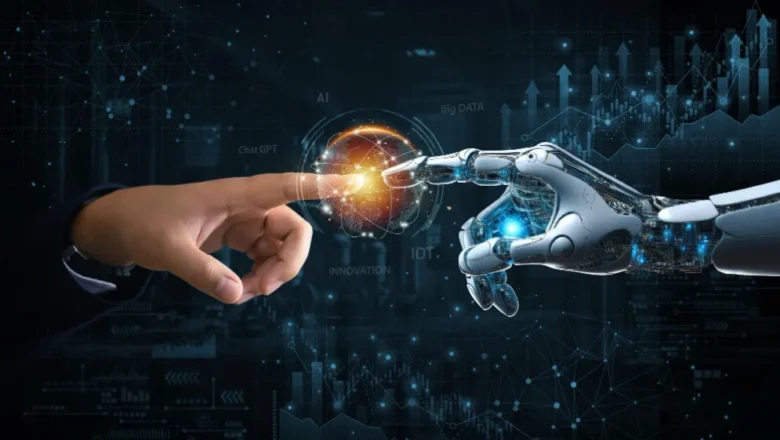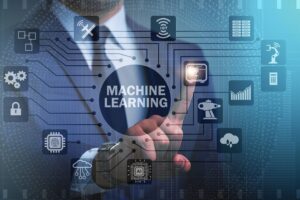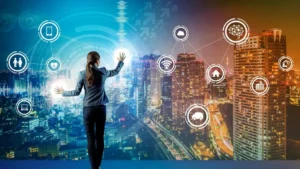Daily, you rely on various technologies without even realizing it. From your smartphone to smart appliances in your home, they play an integral part in how you work, communicate, and live. Middle-aged adults tend to show an interest in new technology; however, limited studies investigate its effect on their lifestyle and health.
1. Autonomous Vehicles
Autonomous vehicles are designed to make driving safer and more efficient by eliminating human errors and decreasing traffic congestion. They use sensors like cameras, GPS devices, and lidars to gather information about their environment. Advanced software then uses this information to predict driver actions and identify obstacles.
Technology now makes it possible for cars to communicate between themselves, synchronizing speed, spacing, and lane changes for seamless traffic flow and eliminating some signals in some settings. Our survey participants are optimistic about AV adoption; most respondents anticipated improved safety as an important factor driving adoption.
2. AI Agents
AI agents can be deployed to perform specific tasks based on clear objectives and can work collaboratively with other agents or humans. Furthermore, these AI agents are capable of gathering and processing information as well as making decisions and taking appropriate actions.
AI-powered helpers can streamline processes by automating repetitive tasks and freeing up human employees for more complex projects, such as customer support agents, autonomous vehicles, and content recommendation bots. AI agents need to understand their environments, including other software, data, and agents with which they interact, before adapting and expanding as necessary. Therefore, it’s wise to start out small with manageable tasks before gradually expanding into larger ones as required.
3. Digital Twins
Digital twins are virtual representations of objects or processes with the capability of interfacing with real life, used extensively in engineering and manufacturing to simulate design changes, improve performance, reduce development costs, and enhance quality. This technology has proven its worth across numerous engineering applications.
Product digital twins allow companies to rapidly iterate and optimize designs without the need for physical prototyping, drastically shortening time to market and potentially saving costs associated with late-stage fixes. Furthermore, digital twins can allow rapid iterations and optimization of designs without physical prototypes being necessary, leading to reduced time to market as potential flaws are identified prior to production commencing and any costly fixes can be addressed early on in development cycles.
A systems twin provides enterprises with historical and real-time data from across their enterprise, streamlining cost optimization while improving resiliency against supply-and-demand shocks. A data thread connects industrial workspaces with energy consumption or factory floors with service trucks.
4. Wearables
Wearable devices of today offer much more than fitness tracking or smartphone companion apps: they can monitor heart health, track sleep patterns, and offer augmented reality capabilities; plus, they make staying connected easier without constantly having to turn on a phone!
Wearable devices offer healthcarepatients a way to take an active part in managing their own condition and avoid complications, but some barriers remain, including concerns over price and accessibility; additionally, many may view these devices skeptically; therefore, healthcare providers must promote wearables to convince those skeptical that they may actually provide advantages.
5. Extended Reality
Virtual reality, augmented reality, and mixed reality technologies all exist within an extended reality framework, merging digital information with physical reality through technologically enabled interactions between humans and machines. Medical students, surgeons, firefighters, and pilots can train in risky simulated environments to save both time and money as they closely track their performance.
Emerging technologies are revolutionizing industries around the globe. Applications include trend forecasting, smart clothing and homes, rapid prototyping, and immersive experiences—but challenges and ethical concerns such as data hacks, compromised privacy, or bias-free solutions will need to be considered carefully before moving forward with these initiatives.
6. Smart Homes
Smart home technology has grown increasingly popular with consumers due to its security and comfort benefits; however, cost concerns often put consumers off purchasing such devices. Integrated with health and wellness systems, smart homes allow residents to easily monitor their energy consumption habits and improve living conditions. Furthermore, the integration of energy-saving appliances, water management technologies, and irrigation solutions with smart homes contributes to their sustainability.
Smart home devices provide an effortless and secure means of controlling and monitoring home environments from anywhere. From accessing door locks or garage doors remotely to setting lights and music to play upon arrival home, these devices make life much simpler for homeowners.
7. Smart Cities
Cities face numerous challenges, from traffic congestion and resource mismanagement to increased crime rates and environmental pollution. Smart technologies offer solutions to help address these problems while improving the lives of their residents. Cities employ smart-mobility applications to reduce commuters’ commuting time by optimizing transit systems, saving them up to 15 minutes each day in dense cities with dense commuter patterns.
Smart-city technologies also include apps that enable citizens to report road problems directly and communicate with city officials, while weather sensors and lighting control applications that respond automatically can save energy costs and avoid traffic gridlock.
8. Robotics
Robotics has long been seen as part of our everyday lives. From helping surgeons perform delicate operations to agriculture and delivery services using AI navigation services, robotics has taken on various roles across society.
Hospitality robots can also assist hospitality businesses by checking in guests, serving drinks at cafes, and covering for worker shortages. Social robots may help reduce feelings of isolation among elderly and sick individuals through interaction. Equipped with advanced programming and generative AI capabilities, robots have evolved from simple machines into collaborative collaborators equipped with cognitive functions.
9. Artificial Intelligence
AI is quietly revolutionizing lives across the world in unseen ways that reach millions. It is present in wearable fitness trackers that track movement, home COVID-19 tests and pulse oximeters, customer service chatbots, and security cameras that recognize faces.
Technology is revolutionizing online shopping, optimizing travel routes, and helping companies streamline operations. It reduces production delays and costs associated with employee mistakes while predicting when maintenance needs to take place. AI can transform both business and everyday life, yet it is often misrepresented as being frightening or controversial. To maximize its advantages, governments should regulate broad objectives rather than specific algorithms while taking bias seriously and maintaining mechanisms for human control and oversight.




